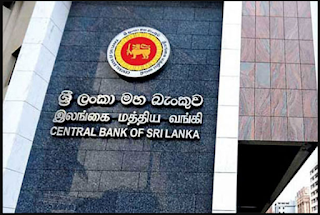CB loss Rs. 114 bn is fraudulent? Actual profit is Rs. 492 bn.! Who is responsible for misreporting?
This article is to present the actual profitability of the central bank (CB) in 2022 and 2023 against the colossal losses published by the CB.
Loss scenario - Business accounting standards
- The CB has reported a loss of Rs. 374 bn for 2022 and Rs. 114 bn for 2023 (see table below).
- This is based on adoption of evolving business accounting standards recommended for large commercial-based financial institutions. Therefore, the adoption of same standards for the CB is inappropriate for the CB is a financial regulatory institution operating on monopoly money printing license of the government. For instance, huge book-keeping/unrealised loss of Rs. 737 bn in 2022 and Rs. 597 bn in 2023 has resulted annual losses for 2022 and 2023.
- A detailed article was released in this blog yesterday (Read the article here) to explain the inappropriateness of business accounting standards for central banks and questionable accounting used for the CB.
- These standards account income and expenses only on realised and accrued basis. Accordingly, assets and liabilities are valued at cost. Therefore, the accounting concept of unrealized gain/loss (book-keeping profit) arrived at valuation of assets at model-based market prices is not accepted for central banks. Accordingly, the unrealized exchange gain/loss on revaluation of foreign assets and liabilities at new exchange rates also is not taken into income.
- Accordingly, a profit of Rs. 379 bn for 2022 and Rs. 492 bn for 2023 (see the Table below) is calculated on the basis of financial information gathered from financial statements published by the CB.
- Accordingly, the government should have received a dividend of at least Rs. 417 bn in 2023. In 2022, the government received no dividend but should have received at least Rs. 142 bn. It should have been more as the retained profit of Rs. 235 bn in 2022 is excessive and unjustified.
- The annual profit and the profit distributable to the government should have been significantly higher if not for
- arbitrarily lower interest offered to banks on CB lending and liquidity facilities (reverse repo auctions, special liquidity facility and intra-day liquidity facility) (For instance, the lost income on overnight repo auctions alone is Rs. 11 bn in 2023) and
- payment of interest (standing deposit facility rate) on bank excess/idle reserve balances at the CB unreasonably as explained in the previous article stated above.
- Financial statements published by the CB are based on inappropriate business accounting standards and, therefore, do not represent true outcomes of money printing and connected monetary operations of the CB.
- In fact, these financial statements are creative accounting purposely adopted by relevant professionals of the CB despite the conventional accounting principles and practices available in the central banking literature, especially the world's leading central bank, the US Federal Reserve.
- Therefore, the Parliament and Minister of Finance being the supervisory/oversight authorities of the CB are responsible for the offence of creative accounting of the CB unless they investigate and rectify it.
- Otherwise, true affairs of monetary system and economy and the cost to tax payers are misrepresented and misreported which are not trustworthy for the use of country's macroeconomic management.
- Financial reporting of other state institutions also may have such creative accounting that causes significant cost to the national budget and tax payers. For example, in 2023 the government lost nearly Rs. 417 bn of dividend income from the CB that could have been utilized to reduce same amount of tax burden of the public.
- It is questionable how the government will fight corruption if leading state institutions such as the CB hide true financial outcomes and profits remittable to the government through fraudulent devices.
P Samarasiri
Former Deputy Governor, Central Bank of Sri Lanka
(Former Director of Bank Supervision, Assistant Governor, Secretary to the Monetary Board and Compliance Officer of the Central Bank, Former Chairman of the Sri Lanka Accounting and Auditing Standards Board and Credit Information Bureau, Former Chairman and Vice Chairman of the Institute of Bankers of Sri Lanka, Former Member of the Securities and Exchange Commission and Insurance Regulatory Commission and the Author of 12 Economics and Banking Books and a large number of articles published.






Comments
Post a Comment